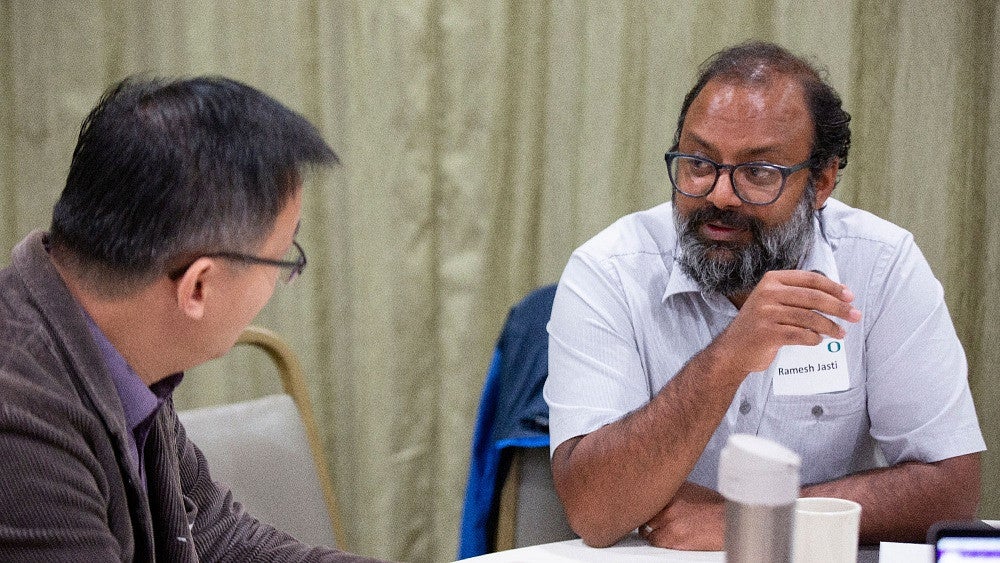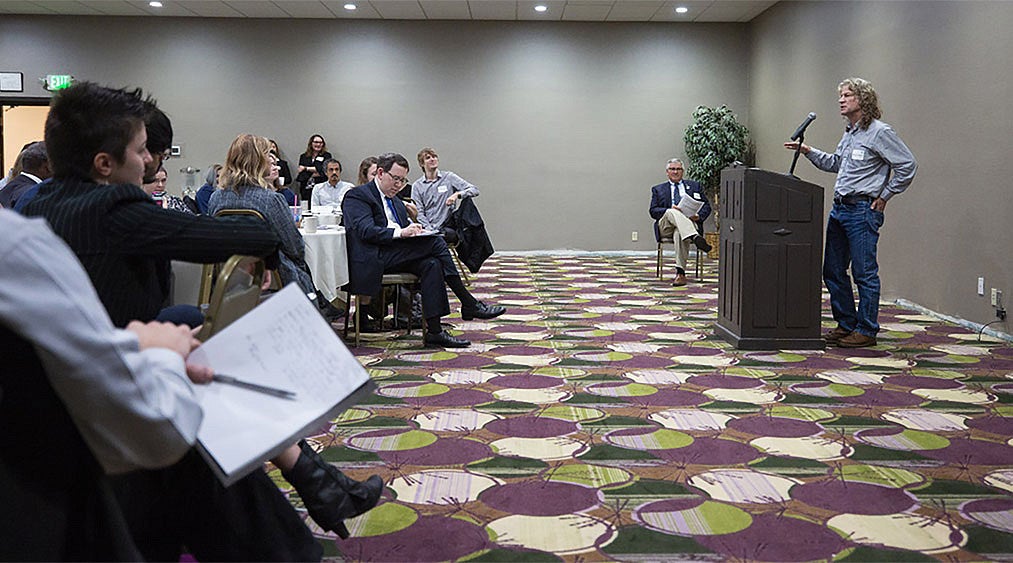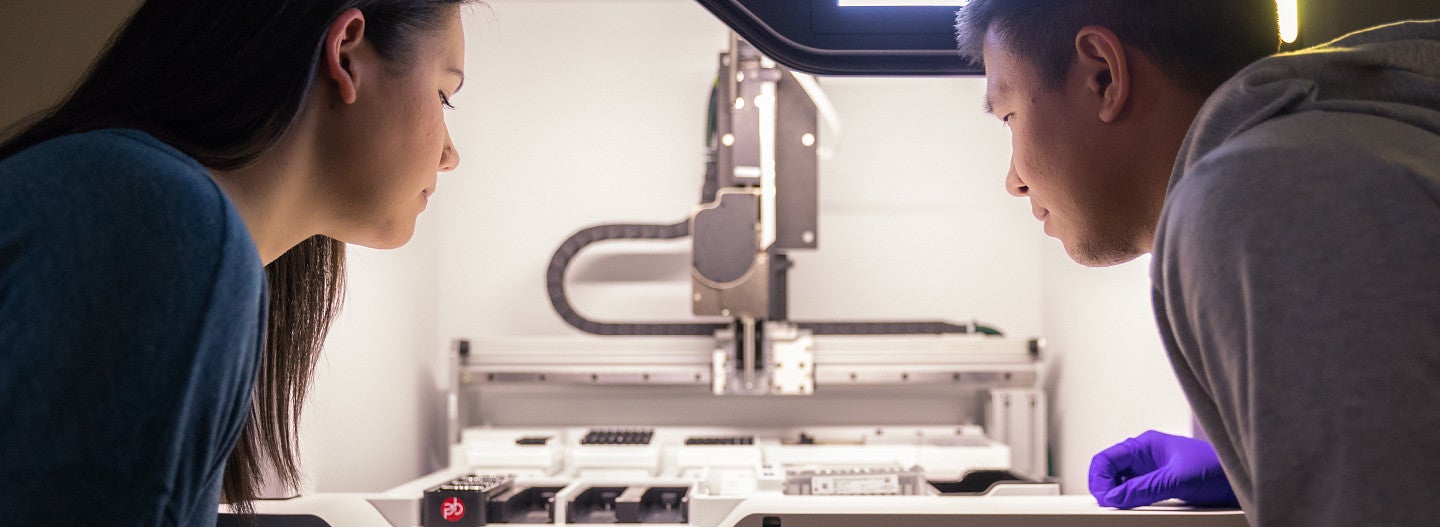
The University of Oregon and Oregon Health & Science University announced plans today for a joint center in biomedical data science, empowering researchers at both institutions to attack cancer with big data.
The partnership would combine efforts at the UO’s Phil and Penny Knight Campus for Accelerating Scientific Impact with those at the OHSU Knight Cancer Institute to detect and fight deadly forms of cancer and other diseases in a jointly operated center initially involving as many as 20 researchers and their teams. The research center will develop new approaches to quickly and efficiently analyze large groupings of data, allowing researchers to “listen in” on cell development for early detection of lethal diseases.
Couple gives $10 million to UO for biomedical data science
Tim and Mary Boyle strengthen the UO-OHSU biomedical data science efforts.

“This Knight-to-Knight partnership is one of the many ways we’re putting Oregon on the national map in how we translate discovery into impact. We are creating this unique inter-institutional center recognizing that conquering complex diseases like cancer requires a team effort and effective integration of laboratory science with big data analytics.”
—Robert Guldberg, Ph.D
Vice President and Robert and Leona DeArmond Executive Director, Phil and Penny Knight Campus for Accelerating Scientific Impact
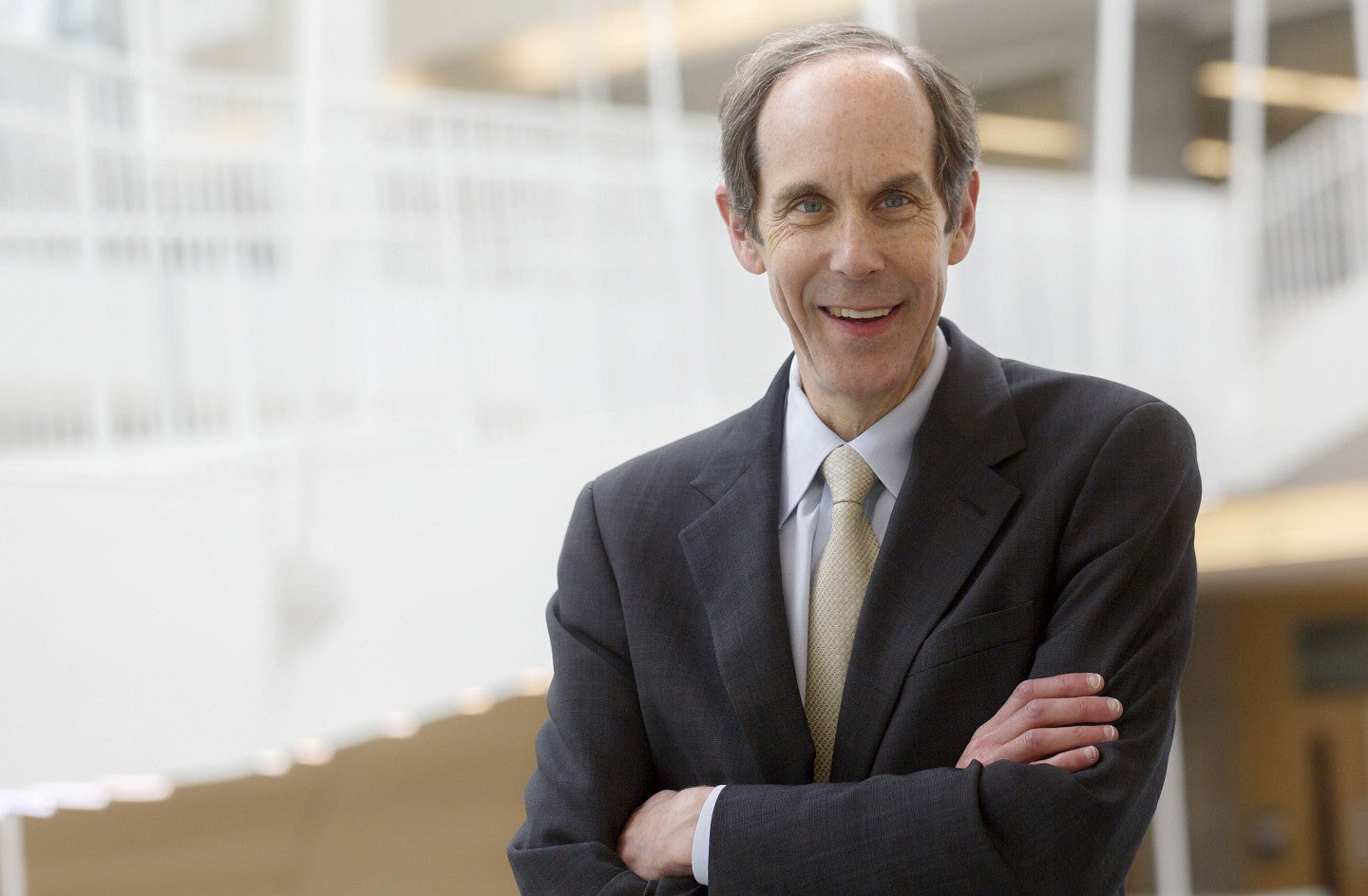
“Breakthroughs in early detection and precision medicine require expertise in a variety of areas such as engineering, bioinformatics and genomics. By leveraging each institution’s strengths, we can maximize our combined research efforts, and ultimately, make the greatest impact for patients.”
—Brian Druker
Director, OHSU Knight Cancer Institute
The new UO-OHSU joint center builds on a foundation of the UO’s strong history in the biological sciences and its new interdisciplinary Data Science Initiative. Announced last fall, the initiative integrates research and liberal arts strengths from around the UO to collect, analyze and interpret data in a way that has positive societal impact.
The initiative, along with UO graduate programs in areas such as computer science, math, life sciences, ethics and soon-to-be bioengineering, will combine with OHSU’s large-scale efforts in precision medicine to more quickly identify cell abnormalities that lead to cancer and other diseases. Earlier detection of lethal cancers represents the greatest opportunity to boost survival rates.
Knights' Generosity Inspires Partnership
The partnership is inspired by the philanthropy of Penny and Phil Knight, lead donors for both the UO’s Knight Campus and the OHSU Knight Cancer Institute.
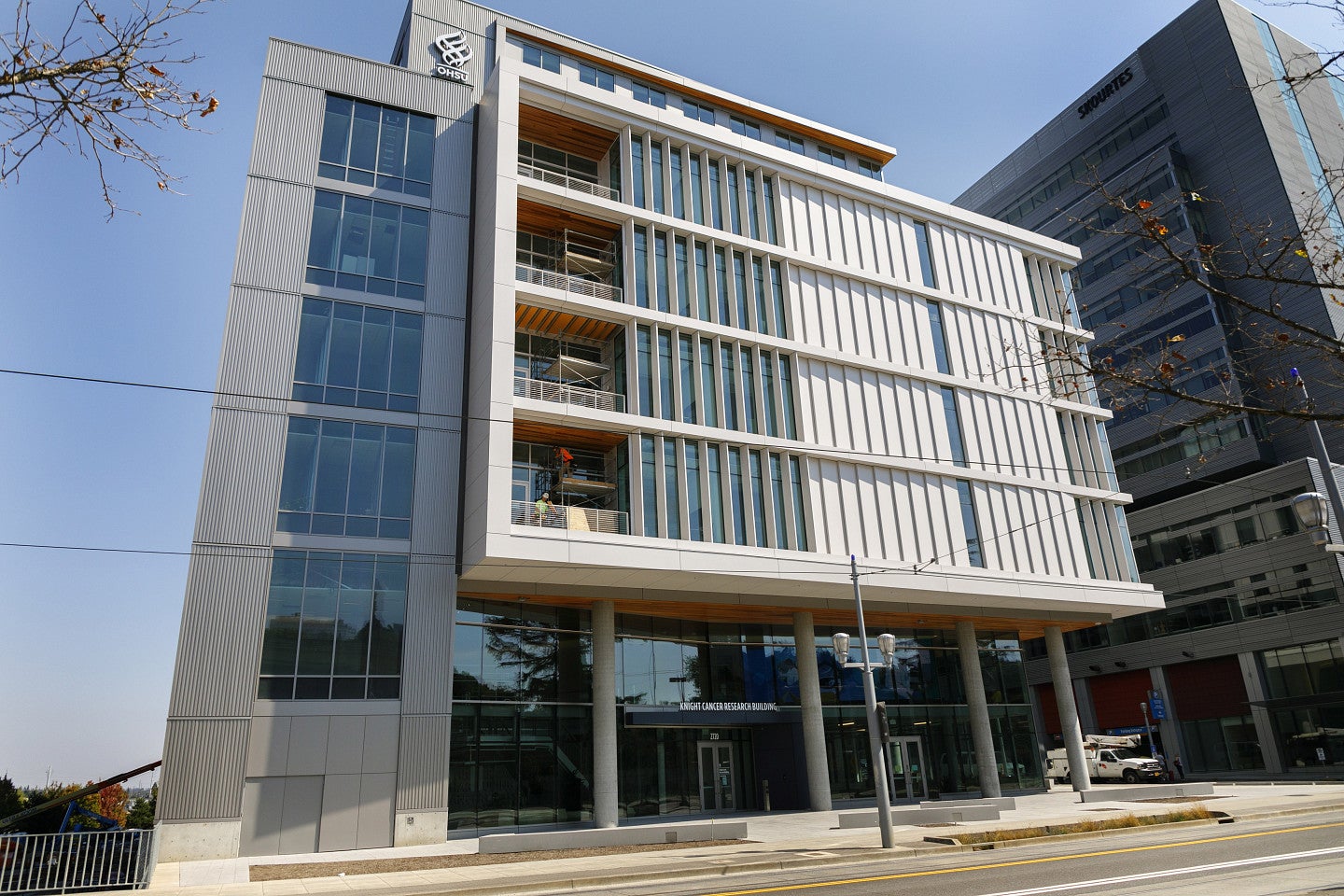
In 2013, the Knights issued a surprise pledge of $500 million to the cancer institute, contingent upon OHSU completing a $500 million fundraising campaign to match it. Donors from around the world rose to the challenge, and the campaign was successfully completed in June 2015.
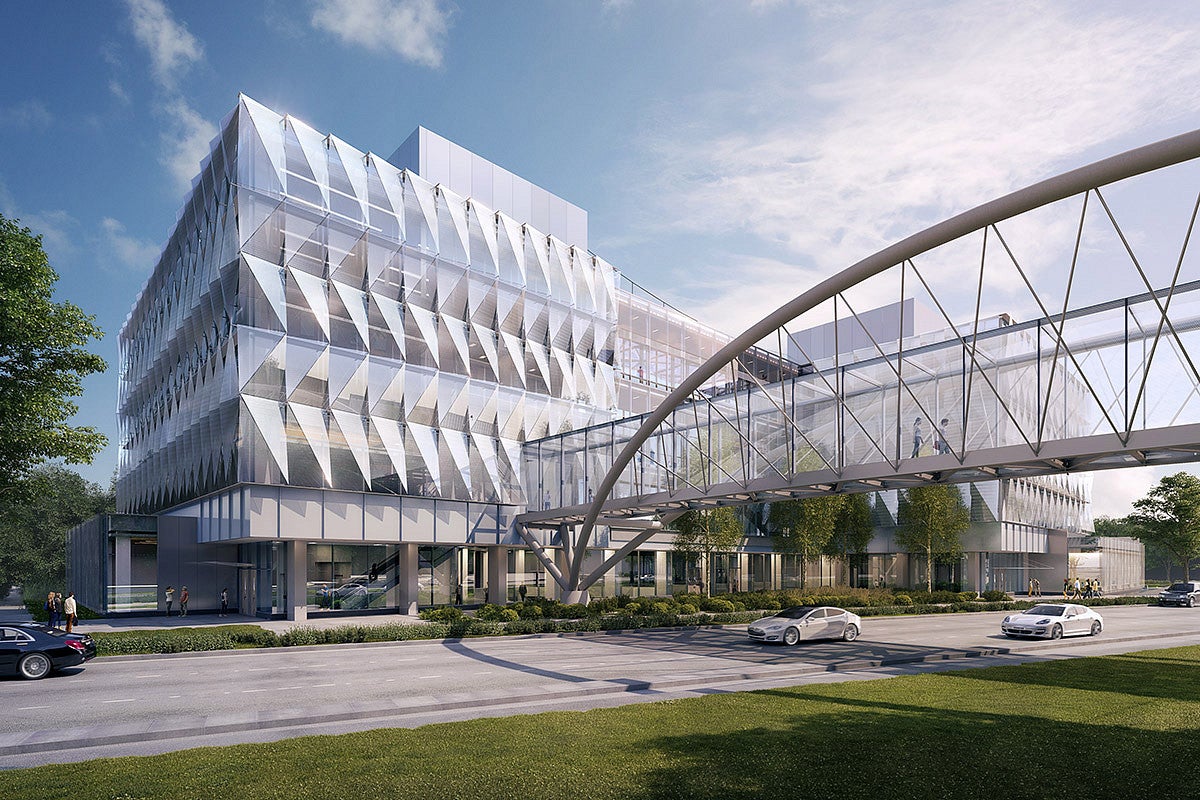
The UO’s Knight Campus is a billion-dollar initiative aimed at integrating research, training, and entrepreneurship into a single, nimble, interdisciplinary enterprise. Announced in 2016, it is made possible by a $500 million lead gift from the Knights. In addition to the gift, $70 million in state bonds support the campus. Its first building is slated to open in 2020.
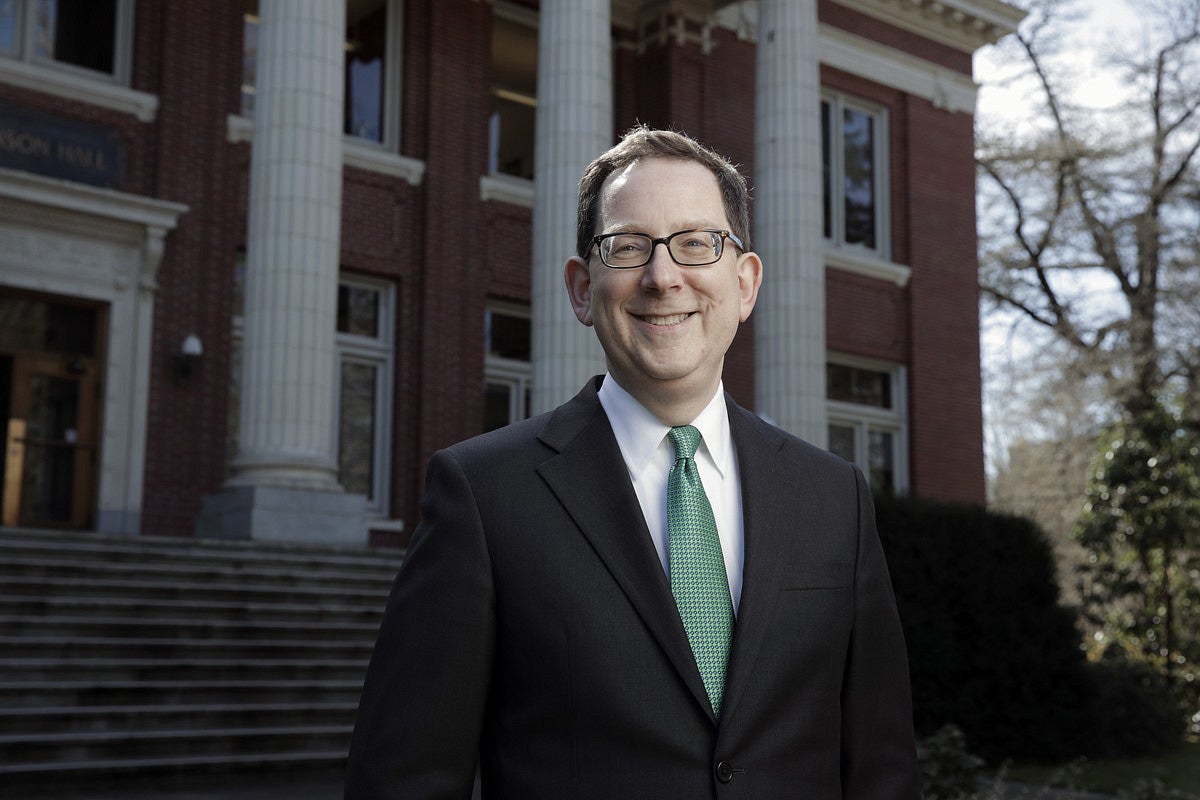
"Penny and Phil have built a legacy that inspires us all to be the best. This partnership seeks to maximize the benefits of their generosity not just for all Oregonians but for people around the world."
—Michael Schill
President, University of Oregon
Data Science Essential to Oregon’s Success
At UO, the partnership marks the first concrete efforts to combine work at the Knight Campus with efforts in data science, as well as clinical work, at OHSU. The result provides a model for the development of other focal areas, such as environmental big data, business analytics, ethics, behavioral data science and of collaborative research across UO and around the state, said Bill Cresko, biology professor and executive director of the UO’s Data Science Initiative.
The agreement calls for a director to report jointly to OHSU and UO. Between the two institutions, the center is expected to hire more than eight new faculty members, bringing together existing faculty that could comprise a group greater than 20 in total. At the UO, those hires are slated to be in genomics, computer science, applied math and machine learning. This partnership will attract new students and postdoctoral fellows to both institutions to work on pressing biomedical problems that can be explored and solved using computational approaches.
“This allows us to recruit world-class faculty and graduate students like never before,” Cresko said. “We’ll attract a more diverse team of colleagues and students simply because we’ll have greatly increased opportunities in applied, translational and clinical research.”

UO Sees Opportunities for Clinical Impact
The partnership opens doors for UO faculty and the state’s most talented students, also bolstering opportunities for those who have been historically under-represented.
Over the years, a lack of clinical research opportunities meant losing both students and faculty members to out-of-state institutions with better prospects for engaging in translational research. Now, UO researchers — faculty and graduate students — can push discoveries into a clinical environment and collaborate with colleagues, speeding the path from discovery to impact, said UO biology professor Nadia Singh, whose work in genetics and genomics is a prime example of the UO’s expertise in areas key to the partnership.
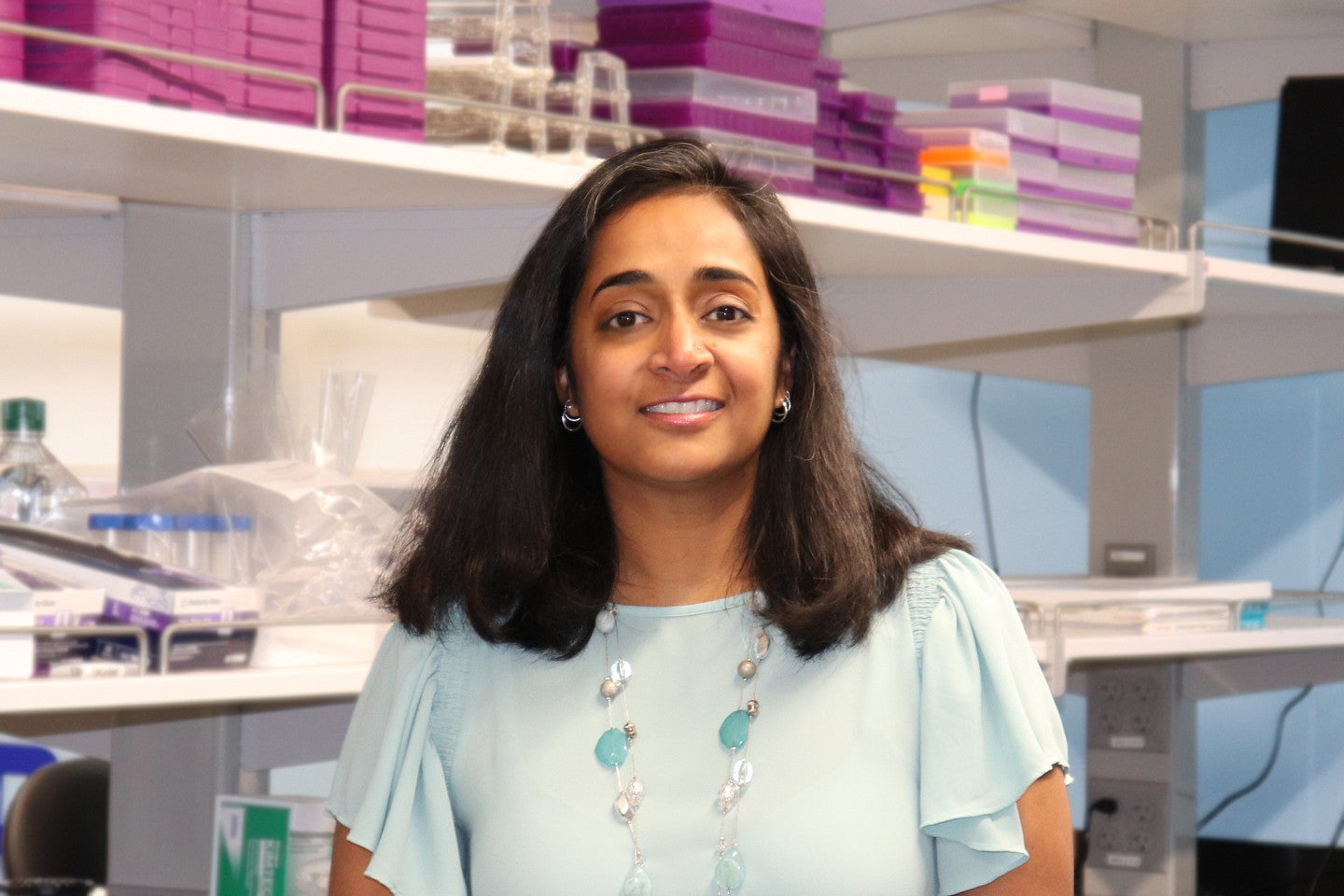
“This partnership creates a diversity of perspective that allows us all to think of things and ask questions we’d never have thought of without it. When people from different disciplines come together, they frame their work in new ways. That’s when real innovation happens.”
—Nadia Singh
UO Biology Professor
Data Science for the 21st Century
The Knight-to-Knight connection makes for a natural partnership in Oregon. But it’s just the first product of the Data Science Initiative’s long-term effort to bring together and support research in areas ranging from social sciences, humanities and natural sciences, to the College of Design, the College of Education and the School of Journalism and Communication.
By integrating data science efforts across the institution, providing infrastructure and building partnerships, the UO initiative fuels essential expansion and increased student opportunities in data science.
“This partnership now takes the UO into a clinical sphere of data science that wasn’t even thinkable just a few years ago,” Cresko said. “But the future is just as exciting, with many similar partnerships on the horizon. Most of these collaborations will be across campus. Some will be around the state. But all of them will apply data science principles to enrich the UO and Oregon for the 21st century.”


